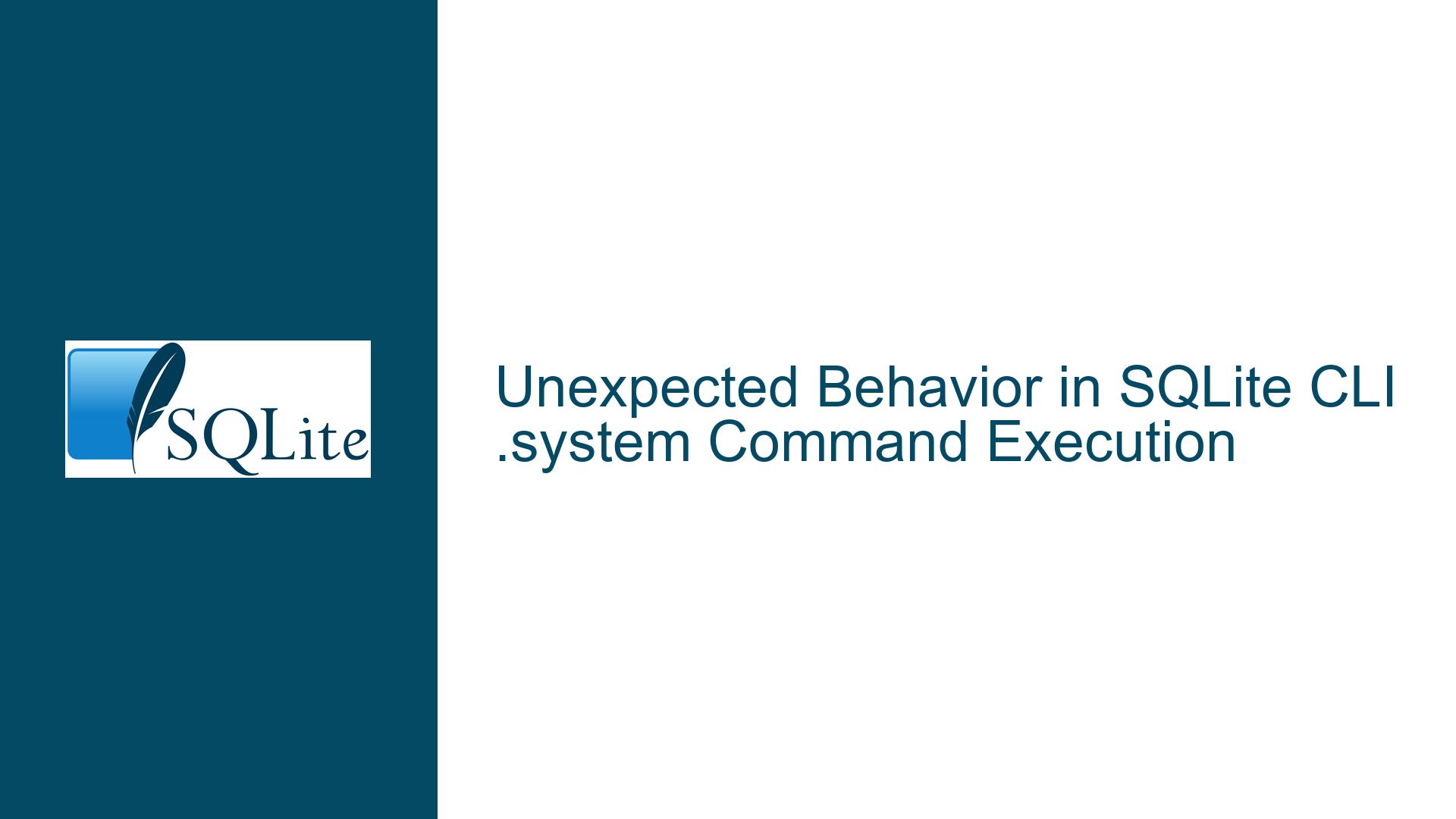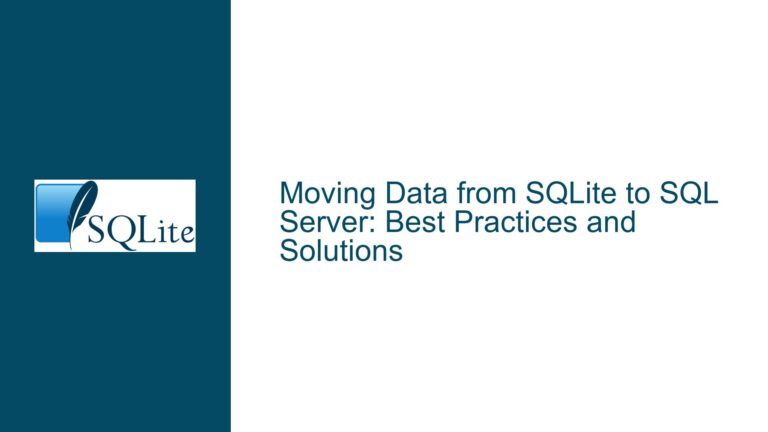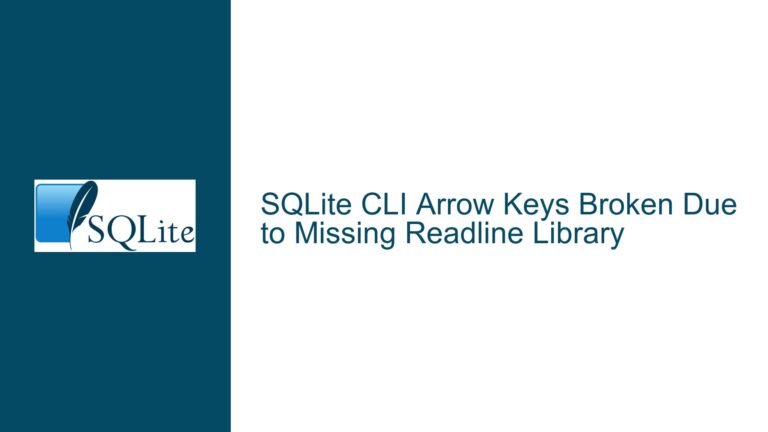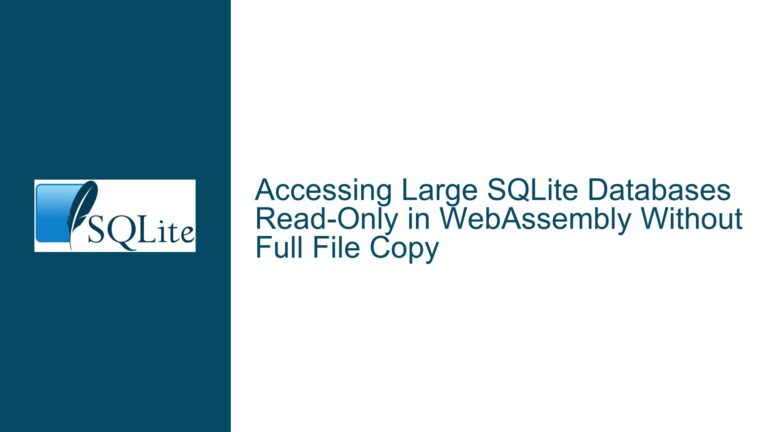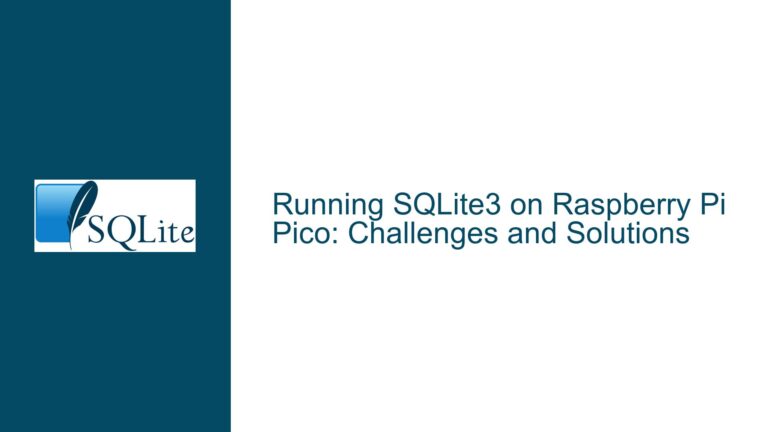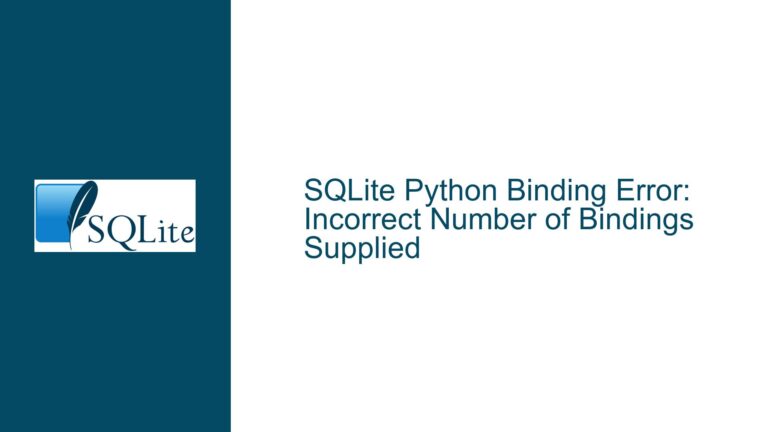Unexpected Behavior in SQLite CLI .system Command Execution
Understanding the .system Command and Its Execution Context
The SQLite Command Line Interface (CLI) is a powerful tool for interacting with SQLite databases, offering a range of built-in commands and the ability to execute SQL statements. One such built-in command is .system, which allows users to execute shell commands directly from within the SQLite CLI. However, the behavior of this command can sometimes lead to unexpected results, particularly when users are not fully aware of how it processes arguments or the context in which it operates.
The .system command in SQLite CLI is designed to pass its arguments directly to the underlying system’s shell. This means that the command does not interpret or modify the arguments in any way; instead, it concatenates them with spaces and passes the resulting string to the system’s system() function. This function then executes the command in the context of the current shell environment, which includes the current working directory and any environment variables that are set.
When a user executes a command like .system type select * from version() limit 1, the SQLite CLI does not interpret the SQL-like syntax within the command. Instead, it treats the entire string as a shell command. In this case, the type command is a shell command that attempts to display the contents of files. The * wildcard character in the shell command matches all files in the current directory, leading to the unintended behavior of attempting to display the contents of multiple files, some of which may be non-text files or large files that cause the CLI to hang.
Potential Causes of Unintended Behavior in .system Command Execution
The unintended behavior observed when using the .system command in SQLite CLI can be attributed to several factors. One of the primary causes is a misunderstanding of how the .system command processes its arguments. Users may expect the command to interpret SQL-like syntax or to provide some level of validation or error checking, but this is not the case. The .system command is a direct pass-through to the system’s shell, and it does not perform any additional processing or validation of the arguments.
Another potential cause of unintended behavior is the context in which the .system command is executed. The command operates within the current working directory of the shell, and it has access to all files and directories within that context. If the current directory contains a large number of files or files that are not text files, the type command may attempt to display the contents of these files, leading to the CLI becoming unresponsive.
Additionally, the behavior of the .system command can be influenced by the specific shell environment in which it is executed. Different shells may have different interpretations of wildcard characters or other special characters, leading to variations in behavior across different systems or environments. For example, the type command in some shells may behave differently than in others, leading to unexpected results when used with the .system command.
Troubleshooting and Resolving Issues with the .system Command
To troubleshoot and resolve issues related to the .system command in SQLite CLI, users should first ensure that they have a clear understanding of how the command processes arguments and the context in which it operates. This includes understanding that the .system command is a direct pass-through to the system’s shell and does not interpret SQL-like syntax or provide any additional validation or error checking.
One approach to avoiding unintended behavior is to use the -safe command-line option when starting the SQLite CLI. This option disables certain potentially dangerous commands, including .system, and can help prevent accidental execution of shell commands that may lead to unintended results. By starting the CLI with the -safe option, users can ensure that they are operating in a more controlled environment and reduce the risk of encountering issues related to the .system command.
Another important step in troubleshooting is to carefully review the documentation for the .system command and the SQLite CLI in general. The documentation provides detailed information on how the command works, including how it processes arguments and the context in which it operates. By familiarizing themselves with this information, users can gain a better understanding of the command’s behavior and avoid common pitfalls.
In cases where the .system command is necessary, users should take care to ensure that the arguments passed to the command are valid and appropriate for the intended operation. This may involve manually validating the arguments or using additional shell commands to preprocess the arguments before passing them to the .system command. For example, users could use the ls command to list the files in the current directory and ensure that the type command will only attempt to display the contents of text files.
Finally, users should be aware of the potential risks associated with executing shell commands from within the SQLite CLI. The .system command provides a powerful tool for interacting with the underlying system, but it also introduces the potential for unintended consequences if not used carefully. By taking a cautious and informed approach to using the .system command, users can minimize the risk of encountering issues and ensure that their interactions with the SQLite CLI are both effective and safe.
Conclusion
The .system command in SQLite CLI is a powerful tool that allows users to execute shell commands directly from within the CLI. However, its behavior can sometimes lead to unexpected results, particularly when users are not fully aware of how it processes arguments or the context in which it operates. By understanding the command’s behavior, using the -safe option, carefully reviewing the documentation, and taking a cautious approach to executing shell commands, users can avoid unintended behavior and ensure that their interactions with the SQLite CLI are both effective and safe.
